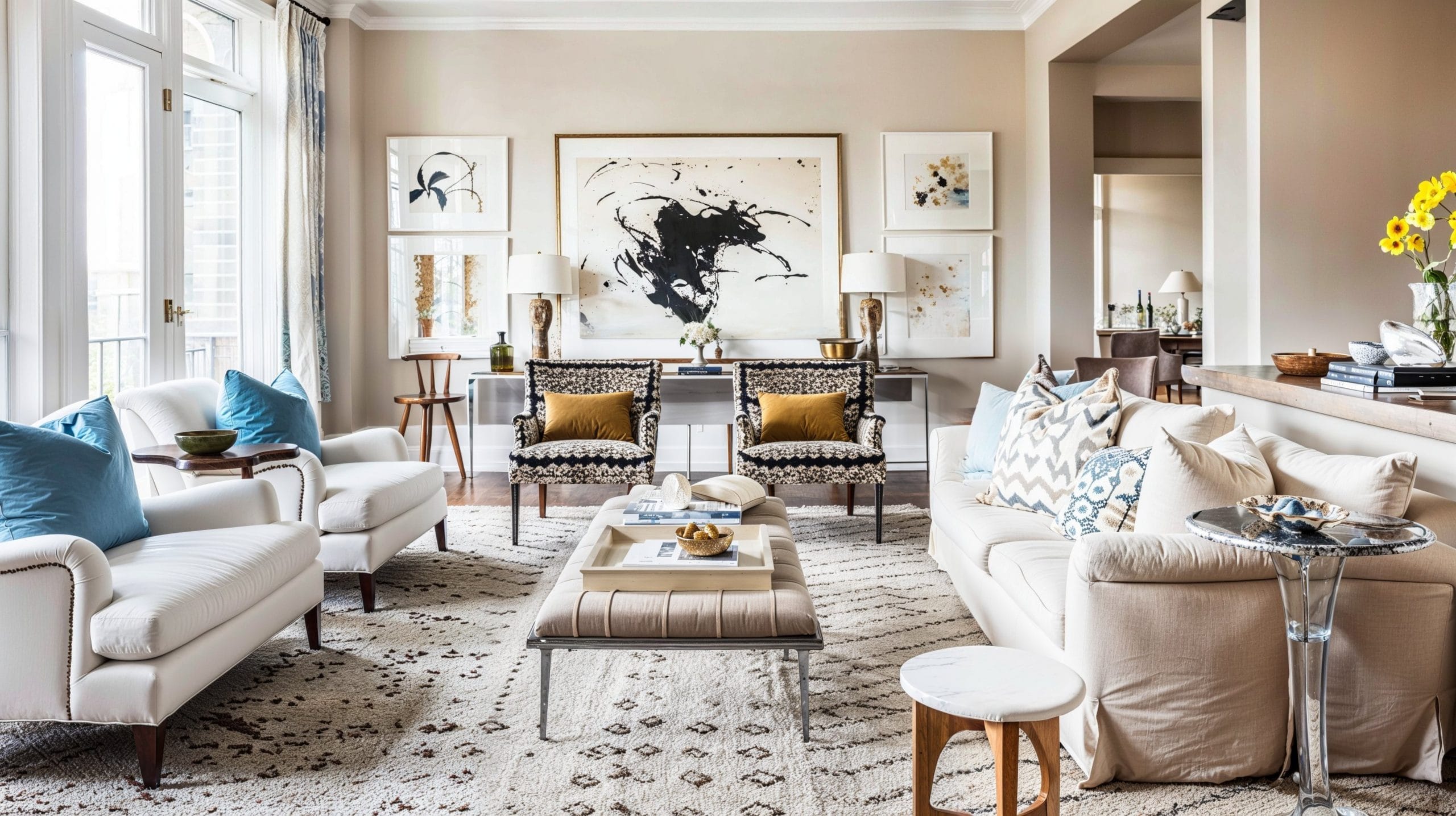Trust experts in miami luxury interior design for high-end home and commercial projects.
Transform Your Home With Crucial Principles of Inside Design and Aesthetics
The art of transforming your home through the essential principles of indoor style and appearance calls for a thoughtful method that balances shade, balance, and spatial recognition. By recognizing the impact of shade theory and the value of appearance and patterns, one can create areas that are not just visually attractive yet additionally deeply individual. Achieving this balance involves more than plain design; it encompasses a calculated plan and an eager understanding of just how each aspect engages within a room. As we discover these foundational ideas, think about just how they may redefine your understanding of home and individual expression.
Comprehending Color Concept
Comprehending the concepts of color theory enables developers to develop rooms that resonate emotionally with passengers while satisfying functional requirements. Each group plays a crucial function in establishing harmony within a space.
The emotional influence of colors is profound; warm tones such as reds and oranges stimulate energy and warmth, while trendy tones like blues and greens promote peace and serenity. Furthermore, the use of corresponding colors boosts visual rate of interest, creating striking contrasts that can boost a room's charm.
Neutral shades, on the various other hand, serve as a flexible backdrop, permitting various other style elements to beam. It is important to think about aspects such as lighting and the area's objective when selecting a color combination, as these can modify the assumption of colors throughout the day.
Ultimately, a well-considered color design can transform a space, cultivating a feeling of comfort and design that straightens with the occupants' choices. Proficiency of color concept is, as a result, an important skill for any interior designer intending to develop harmonious and welcoming atmospheres.
Achieving Balance in Design
How can developers achieve a feeling of stability in their rooms? Accomplishing equilibrium in design is essential to developing harmonious insides.
Asymmetrical equilibrium, on the various other hand, counts on varying elements that still accomplish a natural appearance. This strategy enables even more vibrant and informal setups, supplying rate of interest while maintaining balance. By very carefully picking varying sizes, shades, and textures, designers can create an aesthetically compelling area that feels balanced yet energetic.
Radial equilibrium emphasizes a central centerpiece with aspects emitting outside. This style is commonly seen in circular layouts, where furniture and design produce a natural border that draws the eye inward.
Ultimately, accomplishing balance needs thoughtful consideration of range, proportion, and the relationships in between aspects. Architecture Firm. By skillfully applying these balance principles, designers can transform spaces right into settings that feel both visually pleasing and functionally harmonious, improving the general experience for occupants
Value of Spatial Recognition

An eager feeling of spatial understanding permits developers to determine centerpieces within a room, assisting the visitor's attention to essential attributes while preserving a total sense of unity. It also assists in the critical placement of lighting, which can considerably influence the assumption of space and mood. Moreover, understanding spatial relationships allows the developer to accommodate the particular demands of citizens, making certain that each area offers its intended objective without jeopardizing visual appeals.
Eventually, spatial awareness is essential for taking full advantage of the capacity of any kind of interior room. By thoroughly considering the interplay between measurements, design, and feature, developers can produce settings that not only satisfy functional requirements but also evoke a sense of convenience and charm, improving the overall living experience.
Incorporating Structure and Patterns
Embracing a varied series of appearances and patterns can substantially boost the aesthetic and responsive allure of an interior space. The tactical usage of numerous products-- such as wood, steel, material, and stone-- produces deepness and interest, making an area feel extra inviting and dynamic. For example, integrating smooth surfaces with rough textures can establish a balance that attracts the eye and engages the senses.
When including patterns, take into consideration both range and rep. Big patterns can work as centerpieces, while smaller sized, refined styles can enhance various other elements without frustrating the room. Layering patterns, such as pairing floral paddings with candy striped tosses, adds complexity and a feeling of harmony if implemented thoughtfully.
It is also essential to keep a natural shade combination, ensuring that textures and patterns collaborate instead of complete for interest. By choosing a few essential structures and patterns, click here for info you can produce a combined visual that shows your personal style while improving the total atmosphere of the room. Eventually, the careful unification of these elements can change an ordinary area right into a sophisticated atmosphere abundant with personality and warmth.
Customizing Your Space
Creating a space that reflects your character is important to attaining a really inviting setting. Personalization in interior decoration enables you to infuse your special design and rate of interests into your home, changing it from a plain shelter right discover here into a shelter that speaks with that you are. Begin by picking a color palette that reverberates with your emotions-- strong shades can energize, while soft tones use harmony.
Incorporate art work and decor that reflect your passions, whether it be traveling, nature, or abstract concepts. Displaying individual collections, such as books, photographs, or keepsakes, can stimulate cherished memories and develop centerpieces within a room. In addition, take into consideration tailoring functional items, like upholstered furnishings, to line up with your aesthetic choices.

Conclusion
Finally, the improvement of a home via the crucial principles of interior layout and aesthetic appeal necessitates a thorough understanding of color theory, balance, spatial understanding, texture, and customization. Each component contributes dramatically to creating a harmonious and useful living atmosphere - miami interior design. By thoughtfully integrating these concepts, people can boost the visual charm and emotional resonance of their areas, ultimately fostering a home that shows distinct identifications while providing convenience and usefulness